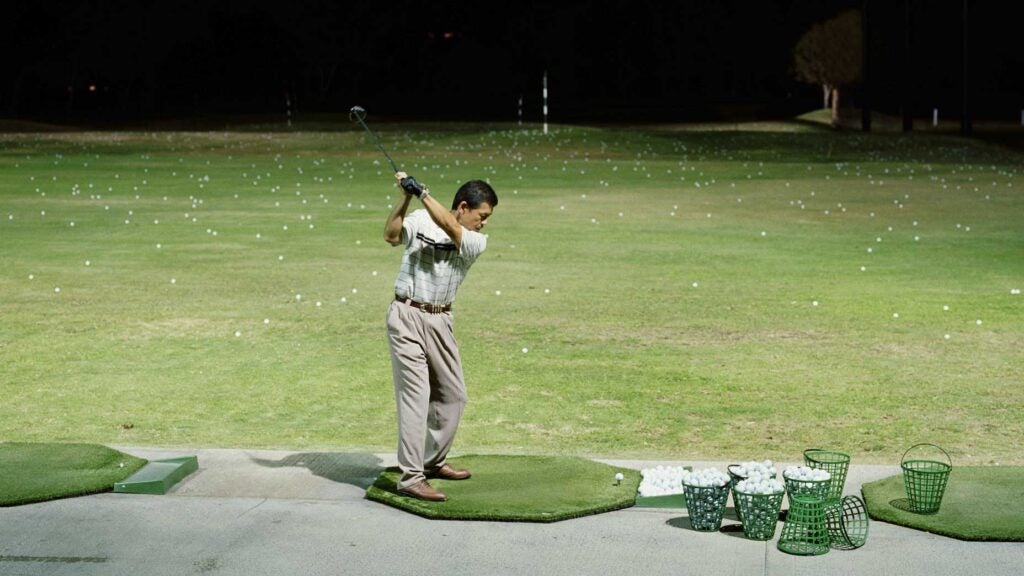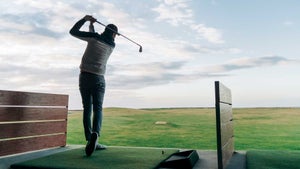I’m faced with the question of how to take the range game to the course all the time. It’s something every golfer has faced at one time in their golf career.
For help with this, I asked renowned sports performance coach and co-founder of Game Like Training, Iain Highfield, for some advice. Below, I’ve highlighted an excerpt from his e-book, Golf Course Practices, that explains why you can’t take your game from the range to the course, and offers some advice on how to fix that.
Why traditional practice routines don’t work
If you’ve been playing golf for any length of time, and made any serious efforts at improvement, you’ve probably had the frustrating experience of hitting the ball beautifully on the range, only to have your new, perfectly repeating swing desert you the moment you set foot on the course.
This happens so often because golf, perhaps more than any other sport, requires players to be constantly solving problems and making rather precise calculations. How will this kind of lie affect the lie of the ball; how should I adjust my stance to cope with this up, down or side slope; can I punch a ball low under this wind and still get it to stop on the green?
Any number of questions like this need to be answered on every shot, making each one a unique challenge and a fresh source of pressure and anxiety. Now compare that with a typical practice session on the driving range.
Perhaps the player will warm up by hitting a few shots with a selection of clubs, starting with a wedge and going through the medium irons and longer clubs and finishing with the driver. They may now continue with that club or go back to a medium or shorter iron, but in either case their serious “practice” is likely to look very similar, consisting of hitting a large number of shots in quick succession with the same club, either from a tee or a perfect, flat lie.
This kind of practice is more effective if the player has the self-discipline to go through a pre-shot routine and line up to a specific target each time. Indeed, the player who practices often enough in this way may become very good — at hitting balls on the range.
But practice through mere repetition requires little if any of the problem-solving skills or coolness under pressure which will be demanded on the course. So, to improve scoring, which is after all be the object of golf practice, the player needs to practice in a way which feels as much as possible like playing and competing.
If you want to improve your scores on the course, heed Highfield’s advice. Introduce some variety to your practice routine, and hit shots that you’ll actually need on the course. You’ll be amazed to see how your scores drop.
Kevin Sprecher is a GOLF Top 100 Teacher and is the director of instruction at Sleepy Hollow GC in Briarcliff Manor, N.Y.


